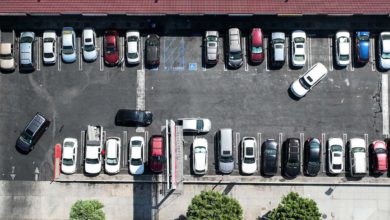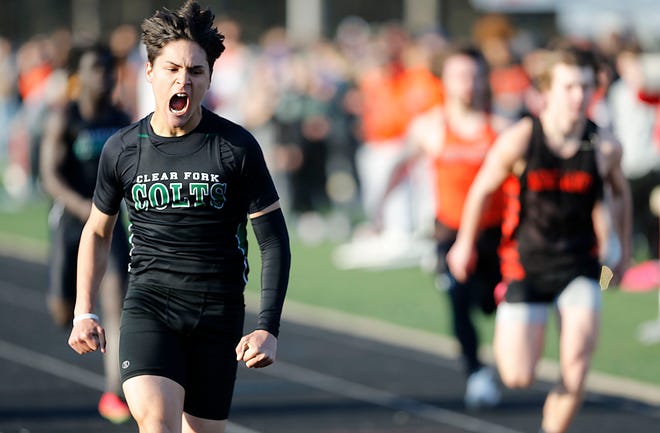

People looking to boost their COVID-19 vaccinations have surpassed the number of people looking to begin them and the additional doses may soon be made available to a greater proportion of the U.S.According to the latest data from the U.S. Centers for Disease Control and Prevention (CDC), there are 1.3 times as many boosters administered each day than first shots.And the number could grow, as the CDC's vaccine advisory committee meets Wednesday to weigh approval for mixing and matching boosters as well as booster doses for Moderna and Johnson & Johnson.Up until this week, only the Pfizer vaccine was authorized for use as a booster for certain high-risk groups who received two doses of the Pfizer vaccine at least six months ago.But the Food and Drug Administration (FDA) on Wednesday authorized booster doses of the Moderna and Johnson & Johnson vaccines and said any of the three authorized vaccines could be used as a booster in a "mix and match approach" for eligible individuals.Thursday's meeting will decide which groups the CDC recommends the boosters for. Typically, shots can be administered once the CDC director signs off on the recommendation.The FDA could also soon lower the age range on its emergency use authorizations for booster shots for coronavirus vaccines once more safety data comes in, officials told reporters Wednesday."We want to make sure that if we deploy the boosters in all of the age ranges, that we truly are making a benefit outweigh any risk," Dr. Peter Marks, director of the FDA's vaccine arm, the Center for Biologics Evaluation and Research, said. "We will not hesitate to drop this age range as we see this benefit outweigh the risk, and because of the EUA authority that we have, we can do that in a relatively quick amount of time."Health experts have said that vaccination is the key to controlling the spread of COVID-19, and many are still encouraging more Americans to get their first doses.But evidence suggests that immunity from full vaccination can wane, which drove the need to authorize booster doses of coronavirus vaccine, acting FDA commissioner Dr. Janet Woodcock said Wednesday."To date, the currently available data suggest waning immunity in some populations of fully vaccinated people," Woodcock told reporters during a telephone briefing."And the availability of these authorized boosters is important for continued protection against COVID-19 disease," she added. "The actions we have taken ... help address this waning immunity."Vaccinating children will play a "major role" in controlling the pandemicYoung children are still not eligible for even their first doses, but experts say their protection will be key to bringing the pandemic under control.Currently, only adolescents as young as 12 are eligible for vaccines, but data has been submitted to the FDA for doses for children 5-11.About 28 million children 5-11 could soon become eligible to get vaccinated against COVID-19 if the FDA authorizes shots for this age group and if the CDC recommends it.Getting most children vaccinated against COVID-19 will "play a major role" in slowing the spread of disease and pushing the nation closer to herd immunity, Dr. Anthony Fauci said Wednesday."In the era of delta, children get infected as readily as adults do. And they transmit the infection as readily as adults do. We may not appreciate that, because about 50% of the infections in children are asymptomatic," Fauci told a White House COVID-19 briefing."If we can get the overwhelming majority of those 28 million children vaccinated, I think that would play a major role in diminishing the spread of infection in the community," said Fauci, who is chief medical adviser to President Joe Biden and director of the National Institute of Allergy and Infectious Diseases."That's one of the reasons why we want to do as best as we can to get those children from 5 to 11 vaccinated."And when they do roll out, the U.S. surgeon general said he wants to make vaccines available to children as soon as possible."That preparation takes planning, it takes time, and that's why we've been working very hard to do a few things over the last several weeks to months," Dr. Vivek Murthy said on NBC's Today.Pandemic plummeted attendance rates for homeless studentsAlthough children have not had the highest rates of infection, they have faced many of the pandemic's impacts. And for children without homes, there have been even more barriers.Attendance rates of homeless students in New York City public schools have dropped significantly amid the pandemic, according to a study released this week by the Advocates for Children of New York.The study, which used attendance data from the NYC Department of Education (DOE), documented that the average attendance rate of students in shelter during the first couple of weeks of the winter semester was only 73%. The year-to-date attendance rate for students in shelters is 78.5%, according to the DOE.There are especially high rates of absenteeism at the high school level, according to the study. Tenth graders "missed more than one out of every three school days in winter and spring 2021, while 9th, 11th, and 12th graders in shelter were absent more than 25% of the time," according to the advocacy group.The study shows that even prior to the pandemic, the average attendance rate for New York City students living in shelters during the 2019-20 school year was only 83.2%, compared to 92.2% for permanently housed students. COVID-19 only added new barriers."High rates of absenteeism in winter and spring 2021 point to a particular need for support for students living in shelter as schools reopen this year," the study says.The non-profit organization recommended that the DOE should use federal COVID-19 relief funds to hire 150 shelter-based DOE community coordinators as a start to "overhaul the education support system in shelters." Community coordinators are typically responsible for providing support and resources to help students get to school."If we want to break the cycle of family homelessness, the city must address barriers to attendance for students in shelter," Jennifer Pringle, Director of Advocates for Children's Learners in Temporary Housing project said. "Fortunately, the DOE is in a position to tackle barriers to attendance for students in shelters with the tens of millions of dollars in federal American Rescue Plan Act — Homeless funds it is poised to receive."According to the New York City DOE, it is in the process of planning for the use of federal money to expand staffing. There are currently 324 DOE personnel in direct contact with homeless students and their families daily, according to the department.
People looking to boost their COVID-19 vaccinations have surpassed the number of people looking to begin them and the additional doses may soon be made available to a greater proportion of the U.S.
According to the latest data from the U.S. Centers for Disease Control and Prevention (CDC), there are 1.3 times as many boosters administered each day than first shots.
And the number could grow, as the CDC's vaccine advisory committee meets Wednesday to weigh approval for mixing and matching boosters as well as booster doses for Moderna and Johnson & Johnson.
Up until this week, only the Pfizer vaccine was authorized for use as a booster for certain high-risk groups who received two doses of the Pfizer vaccine at least six months ago.
But the Food and Drug Administration (FDA) on Wednesday authorized booster doses of the Moderna and Johnson & Johnson vaccines and said any of the three authorized vaccines could be used as a booster in a "mix and match approach" for eligible individuals.
Thursday's meeting will decide which groups the CDC recommends the boosters for. Typically, shots can be administered once the CDC director signs off on the recommendation.
The FDA could also soon lower the age range on its emergency use authorizations for booster shots for coronavirus vaccines once more safety data comes in, officials told reporters Wednesday.
"We want to make sure that if we deploy the boosters in all of the age ranges, that we truly are making a benefit outweigh any risk," Dr. Peter Marks, director of the FDA's vaccine arm, the Center for Biologics Evaluation and Research, said. "We will not hesitate to drop this age range as we see this benefit outweigh the risk, and because of the EUA authority that we have, we can do that in a relatively quick amount of time."
Health experts have said that vaccination is the key to controlling the spread of COVID-19, and many are still encouraging more Americans to get their first doses.
But evidence suggests that immunity from full vaccination can wane, which drove the need to authorize booster doses of coronavirus vaccine, acting FDA commissioner Dr. Janet Woodcock said Wednesday.
"To date, the currently available data suggest waning immunity in some populations of fully vaccinated people," Woodcock told reporters during a telephone briefing.
"And the availability of these authorized boosters is important for continued protection against COVID-19 disease," she added. "The actions we have taken ... help address this waning immunity."
Vaccinating children will play a "major role" in controlling the pandemic
Young children are still not eligible for even their first doses, but experts say their protection will be key to bringing the pandemic under control.
Currently, only adolescents as young as 12 are eligible for vaccines, but data has been submitted to the FDA for doses for children 5-11.
About 28 million children 5-11 could soon become eligible to get vaccinated against COVID-19 if the FDA authorizes shots for this age group and if the CDC recommends it.
Getting most children vaccinated against COVID-19 will "play a major role" in slowing the spread of disease and pushing the nation closer to herd immunity, Dr. Anthony Fauci said Wednesday.
"In the era of delta, children get infected as readily as adults do. And they transmit the infection as readily as adults do. We may not appreciate that, because about 50% of the infections in children are asymptomatic," Fauci told a White House COVID-19 briefing.
"If we can get the overwhelming majority of those 28 million children vaccinated, I think that would play a major role in diminishing the spread of infection in the community," said Fauci, who is chief medical adviser to President Joe Biden and director of the National Institute of Allergy and Infectious Diseases.
"That's one of the reasons why we want to do as best as we can to get those children from 5 to 11 vaccinated."
And when they do roll out, the U.S. surgeon general said he wants to make vaccines available to children as soon as possible.
"That preparation takes planning, it takes time, and that's why we've been working very hard to do a few things over the last several weeks to months," Dr. Vivek Murthy said on NBC's Today.
Pandemic plummeted attendance rates for homeless students
Although children have not had the highest rates of infection, they have faced many of the pandemic's impacts. And for children without homes, there have been even more barriers.
Attendance rates of homeless students in New York City public schools have dropped significantly amid the pandemic, according to a study released this week by the Advocates for Children of New York.
The study, which used attendance data from the NYC Department of Education (DOE), documented that the average attendance rate of students in shelter during the first couple of weeks of the winter semester was only 73%. The year-to-date attendance rate for students in shelters is 78.5%, according to the DOE.
There are especially high rates of absenteeism at the high school level, according to the study. Tenth graders "missed more than one out of every three school days in winter and spring 2021, while 9th, 11th, and 12th graders in shelter were absent more than 25% of the time," according to the advocacy group.
The study shows that even prior to the pandemic, the average attendance rate for New York City students living in shelters during the 2019-20 school year was only 83.2%, compared to 92.2% for permanently housed students. COVID-19 only added new barriers.
"High rates of absenteeism in winter and spring 2021 point to a particular need for support for students living in shelter as schools reopen this year," the study says.
The non-profit organization recommended that the DOE should use federal COVID-19 relief funds to hire 150 shelter-based DOE community coordinators as a start to "overhaul the education support system in shelters." Community coordinators are typically responsible for providing support and resources to help students get to school.
"If we want to break the cycle of family homelessness, the city must address barriers to attendance for students in shelter," Jennifer Pringle, Director of Advocates for Children's Learners in Temporary Housing project said. "Fortunately, the DOE is in a position to tackle barriers to attendance for students in shelters with the tens of millions of dollars in federal American Rescue Plan Act — Homeless funds it is poised to receive."
According to the New York City DOE, it is in the process of planning for the use of federal money to expand staffing. There are currently 324 DOE personnel in direct contact with homeless students and their families daily, according to the department.
Source link








